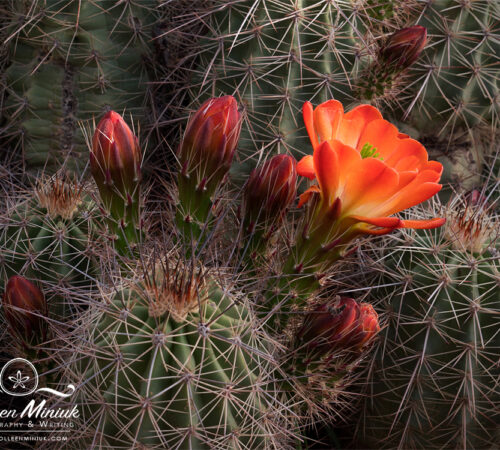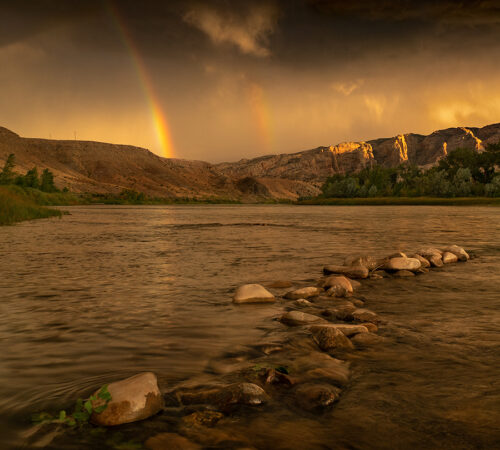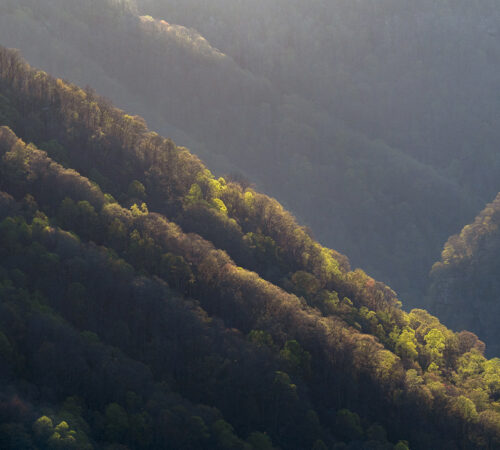Becoming an AIR
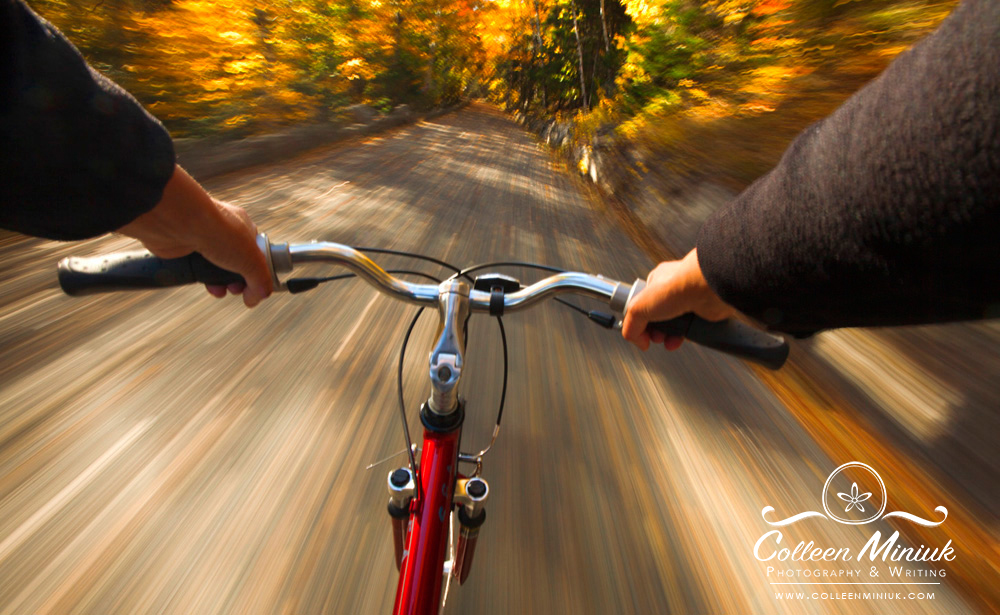
Dear Bubbles:
I understand that you’ve been an artist-in-residence at Acadia multiple times. I am a photographer and an avid fan of the national parks. I am interested in applying to the AIR program. Could you tell me what the application requirements are? Do you have any advice about what might make an application stand out in a positive way?
~Kim
Dear Kim:
I had applied as an artist-in-residence (AIR) at Acadia National Park in 2008 in hopes I’d get a creative jolt. I felt bored and uninspired photographing the desert southwest where I had largely been shooting iconic locations repetitively with growing frustration. I applied for Acadia’s program—sight unseen—so that I could explore my art in a place so different than Arizona. I was lucky enough to be accepted into the program on my first try.
When I arrived in the coastal park in November 2009, it was love at first sight. So I applied again and returned in October 2010. And applied again, and I served as the park’s first-ever winter AIR in January and February 2013. They couldn’t get rid of me!
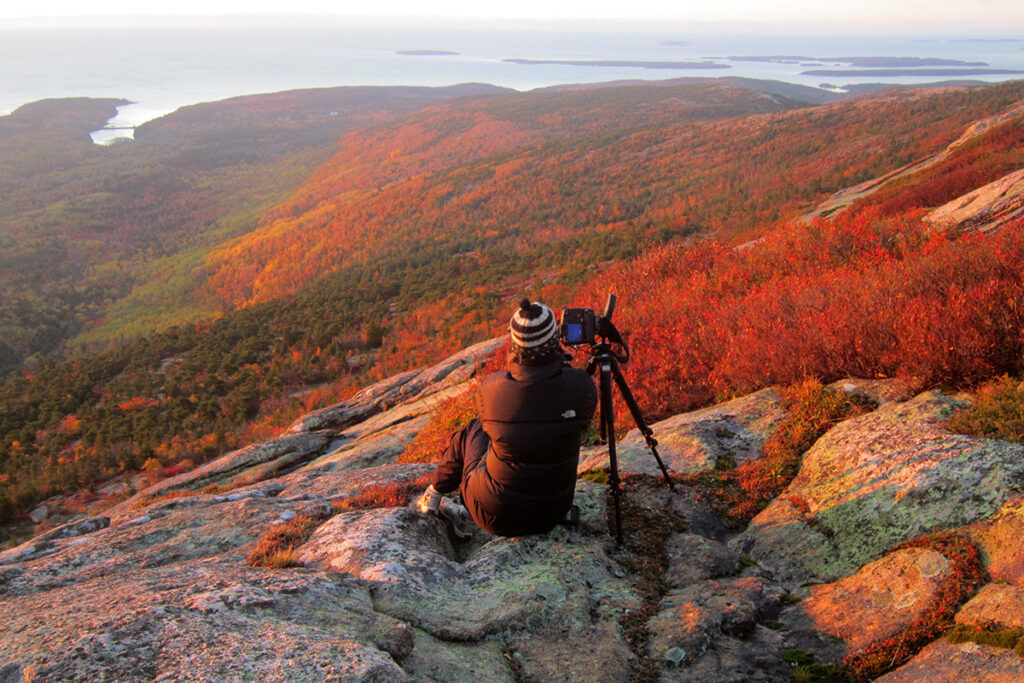
When I first applied, I had no idea that my three terms would help transform me from a photographer who liked taking pretty pictures into a visual artist and writer with a unique voice. But it did! The AIR program also triggered an ongoing love affair with the park. With each visit, my understanding and appreciation for its diverse beauty, its rich history, and its community of people (who all share in this love) only deepened—and continues to grow with each visit I make there.
It’s cliché to say, but the AIR program changed my life. It moved my focus away from the dry land of the desert—something I had struggled to emotionally connect with for years—and into water-related subjects—something that makes my heart and soul feel like it’s floating on air (pun intended). It shifted my mindset away from gear, pressing buttons, and checking boxes on a checklist of rules and into creativity. It increased the value I placed on our national parks and my dedication to become an active steward of the land and sea. It improved who I was as a photographer. It made me a better human being.
I don’t know that every AIR experiences such a major transformation, but I highly recommend the program for anyone who’s interested in learning more about themselves, their art, and our amazing national parks.
The AIR program offers professional artists of any kind the opportunity to explore their creative pursuits and develop new work while in the park. “Professional” is typically defined as a person making 50% or more of their income from their art. On site, the AIR gets blissful freedom to create for a defined period of time ranging from a week to several months. (My first two residencies were three weeks a piece. My third was four weeks.)
One must submit a formal application in order to be considered for this volunteer position. Popular parks like Acadia, Denali, and Isle Royale see well over 100 applicants a year for a limited number of residences. Some parks, like the remote island national park of Dry Tortugas (who requires two people to apply together for safety reasons), sees very few applicants. On average, parks will invite in between 4-12 residents per year, assuming they get that many qualified applicants.
Each program is set up differently and run independently. A park usually provides the artist housing for the duration of the residency. Some even provide a stipend. In almost all situations, though, the artist is responsible for transportation to, from, and around the park as well as personal items, food, and any artistic supplies one might require during their stay.
In exchange for housing and creative free time, the artist is expected to donate at least one finished piece he or she created during the residency. For example, I’ve donated three ready-to-hang prints, one for each term. Those pieces usually get displayed in visitor centers, park gift shops, and park administrative buildings. One of mine, Seasons of Change from October 2010, ended up in the Acadia’s Superintendent’s office for a short time!
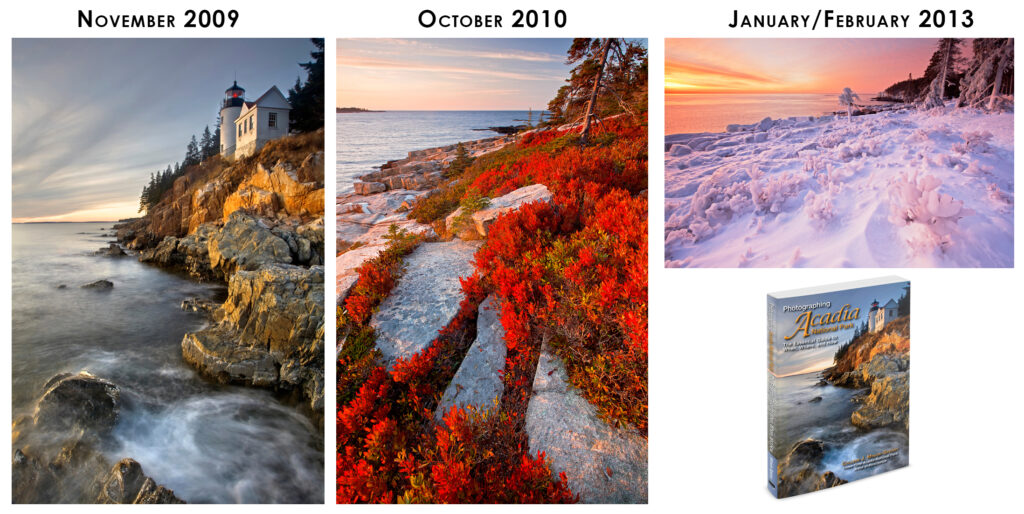
Before you formally apply, be sure to read the application requirements and expectations for this donation carefully. Some parks request only usage rights for the donated piece. This allows the artist to retain copyright for their work. Others require you to sign away your copyright, flinging your work into the public domain. This means anyone at any time can do anything they want with your image, including selling it as a commercial, for-profit product without your permission and without any compensation or credit for your work. As a freelance who generates income off my best work in a place (and as someone who wants to maintain full control over my work…yes, I’m a control freak when it comes to my photographs), that’s a deal breaker for me. It might not be for you, and that’s cool. You do you. I’ll do me.
In addition to the donated piece, the artist must participate in public outreach programs while on site, which can range from a simple Powerpoint presentation about your work to a multi-hour interactive field-based workshop with park visitors and the local community. Typically the park asks for one presentation for each week of your term. One of the biggest draws for me in applying to Acadia was that one of their outreach opportunities involved working not just with the public, but also children in the Schoodic Education Adventure (SEA–clever, huh?!) program.
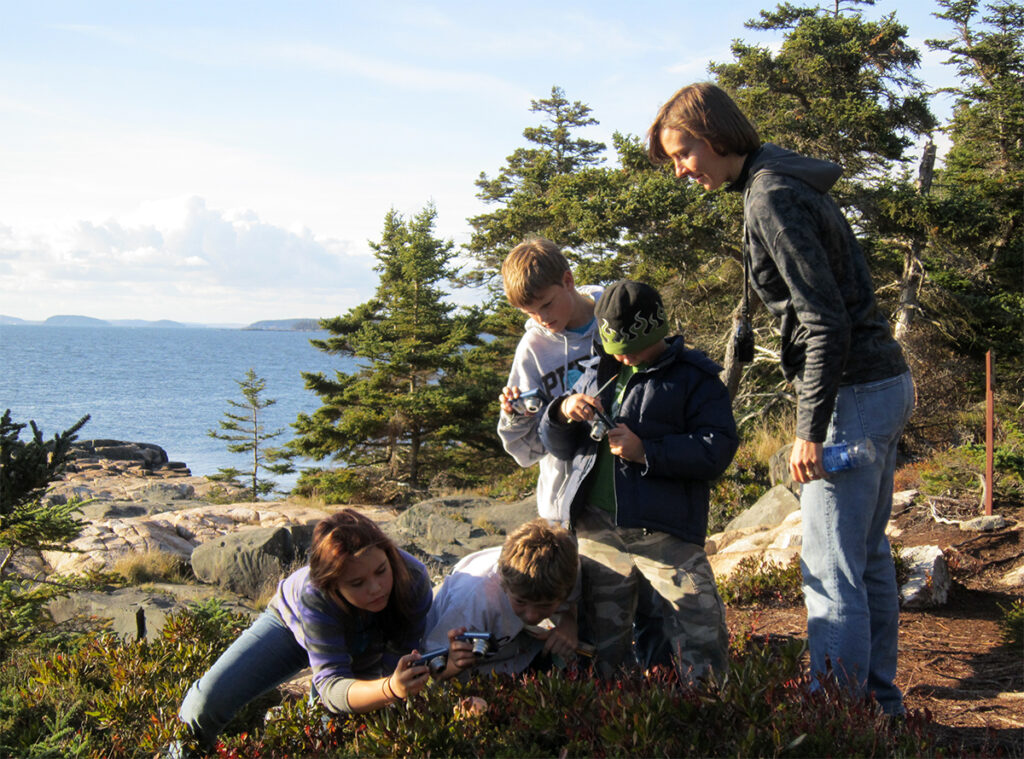
(In fact, I had the chance to help start the Photojournalism program for SEA during my second residency, and it was a highlight of my photography career. I mentioned one life-changing experience from my SEA interaction in an earlier Dear Bubbles post: https://dearbubbles.com/2020/02/keeping-it-fresh. It was so profound that I have donated 10% of my Photographing Acadia National Park guidebook, which I started writing during my third residency, to the SEA program over the last five years—almost $5,500, thanks to those who have bought the book and/or eBook!)
If you feel like the artist-in-residence gig could be a good fit for you, first things first, you have to pick a park or place in which to apply. Anywhere from 20-30 parks in the National Park Service (NPS) offers the program, and the roster changes each year. You can find the current round-up at NPS: https://www.nps.gov/subjects/arts/air.htm. The NPS isn’t the only organization that offers residencies, though. The National Park Art Foundation, wildlife refuges, non-profit organizations, and other private entities accept artists across the country. These listings are not centralized so you’d have to rely upon a quick search of the internet for “artist-in-residences” to find these additional opportunities. That said, a number of them are listed at Call for Entry at https://www.callforentry.org (which is also a great website for photographic exhibition and other opportunities).
Each program has their own application requirements. In general, though, most will request the following materials:
- A personal statement (also called a statement of purpose): Outlines why you wish to serve as an AIR, what you plan to do with your time, and what you hope to accomplish if selected.
- Resume: Features your past qualifications, contributions, and achievements as an artist.
- Portfolio of work: Visual artists like photographers, painters, mixed media, sculptors, etc. are asked to submit a collection of photographs that showcases your best work (which does not have to be from the park you’re applying for). Writers typically submit a few writing samples. Performing artists send in videos of their productions.
- Program descriptions: Definition of what you intend to present, how you’ll engage with the public, and what they’ll learn from it.
- Application fee: This ranges widely based on the program. Acadia’s is currently $25.

After I completed my third residency, I figured Acadia probably had enough of me and decided I wasn’t going to apply for any additional terms there. Instead, I served as a judge for the Acadia AiR program from 2014-2017. I can’t (and won’t) speak on behalf of Acadia’s AiR program, but I can share some insights how I personally evaluated applications:
- Did the applicant follow the application requirements? You’d be surprised by how many people do not follow directions. If the park says the personal statement should be one page long, don’t make it two. Make it one. If the application asks for 6 images, don’t send 20. Submit 6. An artist’s ability (or inability) to follow simple instructions is often indicative of how well they will respect park rules and regulations on site and follow through on post-residency deliverables. Adhering to the application requirements is not the time to express your creativity. Follow directions!
- How does the artist demonstrate competency and uniqueness in their work? How will you interpret the park resources in a fresh perspective? In YOUR unique perspective? What can you offer that others don’t? Sending in a portfolio of touristy, cliché images is the surest way to not get selected.
- How does the applicant’s specific artistic vision fits with the park’s vision (and vice versa)? This is up to the artist to define, not the park. You can do so by learning about the park’s history, mission, and future plans by reviewing the park’s website, reading books, watching documentaries, etc. and connecting what you find with your artistic goals. It may seem counter-intuitive, especially if you’ve never set foot in the park before, but the more specific you are about your ideas, goals, and plan, the better. This shows initiative, connection, and interest. Saying “I want to wander the park and take pictures” is too broad and too vague–and all too common a response from applicants. I spent hours researching Acadia before I penned a single word in my first application. I learned about the effects of tides on a landscape. I read about John D. Rockefeller Jr.’s horse-drawn carriage road system. I found the historic footpaths of the Wabanaki Indians. I included specific references to these and my intent to experience these stories for the first time in order to photograph and write my own history in Acadia.
- How can park can facilitate artist’s growth? Be honest. Outline your background experience and where you feel your art is headed. List out any challenges you are experiencing with your work and how you feel a residency can help you address them. List out questions you seek and how the park can help you answer them. How do you anticipate a residency will influence your approach and output after you’ve completed it? I believed a residency with Acadia could get me out of my creative rut, help me create a new portfolio of work, expand my voice of conservation, preservation, and enjoyment beyond the western national parks, and enable me write a travel adventure book about immersing oneself in a foreign-to-me place. Check. Check. Check. And although I wrote a guidebook instead–and it took me three residencies to finish–check. (For the record, I did include several “Making the Photos” stories about some of my adventures in my guidebook…)
- Does the applicant have the ability to work alone for an extended period of time? Park staff will not babysit an artist during the residency. With the exception of delivering public programs, you’re on your own unless you chose to engage with staff, park supporters, visitors, local artists, etc. (which I highly recommend to enhance your experience). Acadia permitted family members to stay with me, but some parks do not allow guests. If you are not comfortable working in solitude before you arrive, you’ll either learn to appreciate it, or lose your mind. I loved the time alone and the space to create without interruptions, so much so, I changed my approach when I returned home to create more of my work on my own.
- Is the proposed public program engaging or passive? Define a presentation or workshop where you enable park visitors to actively create their own work vs. having them sit and watch a presentation of your slides. Indicate any resources (gear or supplies) required for participation. I defined two different presentations for my first residency: a half-day field-based workshop for the public and what turned into the Photojournalism program (during my second residency) for the Schoodic Education Adventure—after researching Maine’s Learning Results for the Visual Arts to ensure alignment. I even offered to bring disposable cameras to support the school program. (Fortunately, SEA landed a grant which funded cameras for the kids.)
- What is the artist’s commitment to giving back to the park and to their community after their residency? Beyond donating your one finished piece back to the park, how do you plan to share your experiences when you return home? How can you leverage your existing resources to amplify your voice among your community? Almost all of the photography presentations I give across the country include Acadia photographs. I lead photography workshops there each year to give people the chance to see the park through their own lens. My photographs and stories about Acadia have made their way into National Geographic calendars, Downeast Magazine calendars, National Parks Traveler’s blogs and guides, the 2016 Centennial celebration posters, and more. Continuing to find outlets for the work you created not only continues to raise awareness for the park and its valuable resources but it also makes good business sense.
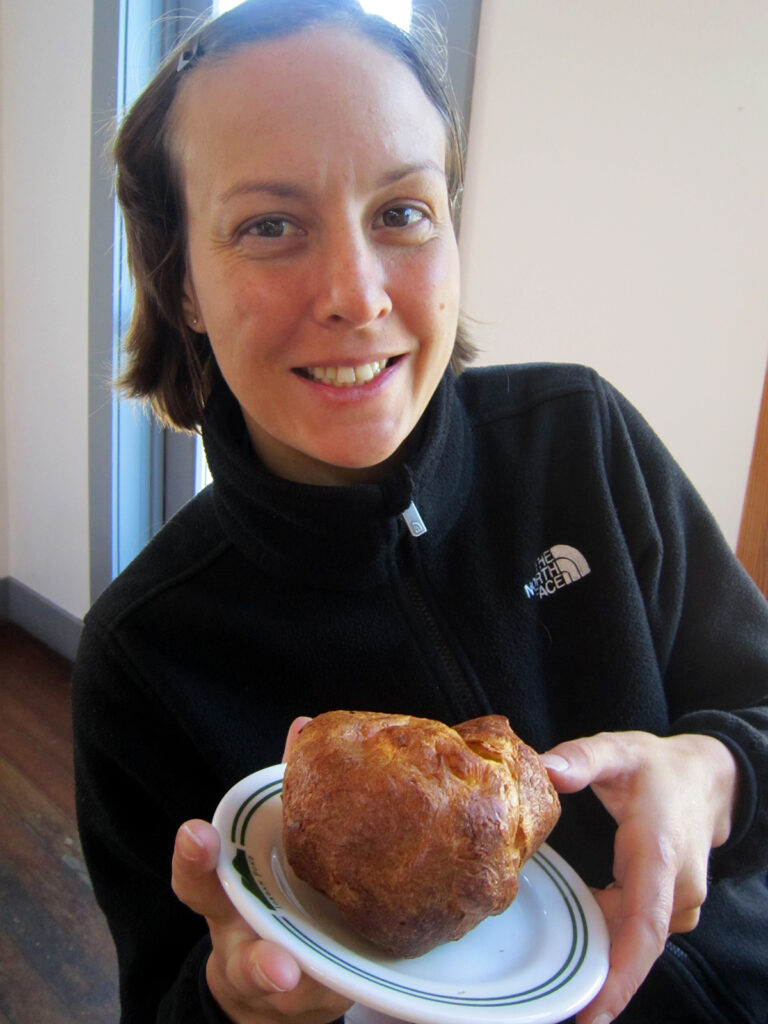
So there you have it. That’s my story about the AIR program, and I’m sticking to it. Hopefully that helps and gives you direction and ideas on how to successfully apply for the residency program of your choice. Good luck!
Be well, be wild,
Bubbles
Have a question about photography, art, and/or the creative life? Need some advice? Send your question to Dear Bubbles at [email protected] to be possibly featured in a future column post. (If you’d prefer a different display name than your real first name, please include your preferred nickname in your note.)


